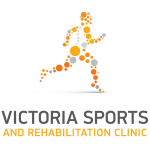Osteoarthritis (OA or degenerative arthritis) is a degenerative disease that is characterized by the gradual decrease in cartilage on the bone surface of the femur (thigh bone) and it’s articulation with the tibia (shin bone). Cartilage is the structure that protects your bones and helps cushion them with movement and activities. The breakdown of cartilage can sometimes cause stiffness and decreased range of motion, pain, swelling and can affect overall mobility. This results in a decreased ability of shock absorption for the joint and as it progresses, can cause ‘bone on bone’ which is that grinding sensation of the bones rubbing together.
Osteoarthritis is often generally referred to as ‘wear and tear’. As a result of this degenerative process, the bony surface of the joint reacts and thickens and new bone (bony spurs) are laid down as the body tries to stabilize the joint. This laying down process is often painless, but these can occasionally encroach on structures such as ligaments and the joint capsule itself. People also often find that certain movements can be catching or locking and can result in inflammation and pain. In progressive and long standing cases the cartilage can be completely worn away and consequently changing the shape of the joint due to wearing patterns and the presence of spurs.
As a result of the change of the articular surfaces and presence of bone spurs, weakening of the surrounding and supportive ligaments can occur which can lead to ligament and tendon disruption and instability.
Who can get Osteoarthritis?
OA is reported to affect 1 in 11 Australians, with 3 out of 5 being female. Other risk factors include:
- Age- 40 years old
- Being overweight
- If you’ve had previous joint injury – ligaments tears, meniscus damage, previous surgeries
- Have worked in physically demanding jobs
- Other medical conditions that could affect the joint such as rheumatoid arthritis
- Genetics/Family History
What are the symptoms?
The most common symptom of knee osteoarthritis is stiffness of the knee joint, especially first thing in the morning. Some individuals will experience swelling however there can often be no pattern to this day to day. Quite commonly sufferers also experience tenderness to touch as well as a creaking or grinding sound referred to as crepitus.
Pain levels can vary from anywhere to mild to debilitating which makes it difficult to do simple daily activities. The pain often isn’t consistent, you can have good days and bad days, and sometimes weather dependent!
Because pain levels and function can vary so much, if you think this condition may be affecting you, it is important to have it seen to by one of our osteopaths or your local GP for assessment to rule out other causes of the pain. If Osteoarthritis is suspected then early management can commence.
What can I do if I’m diagnosed with Osteoarthritis (OA) of the knee?
One of the most common concerns we hear with the diagnosis of OA is that everyone thinks that they will instantly have a partial or full knee replacement. Although in some extreme cases this may be necessary to live as near normal life, there is fantastic research showing that more conservagive management strategies can be very successful without more drastic intervention. Many of these include exercise to help strengthen around the knee as well as the whole spine and pelvis, diet and nutrition (including supplements), weight loss, and sometimes using bracing to help manage symptoms and improve joint health. Some research suggests that these factors can be as effective as a knee replacement in the early stages and can help aid in delaying or even preventing surgery.
Once conservative management changes are no longer controlling your pain levels, or you have had a significant loss in function, your Osteopath will then generally have a discussion with you about the possible next steps. These steps may include pain relief and anti-inflammatory options with the assistance of your GP, or the option to refer to a sports medicine physician or orthopedic surgeon. Generally these professions will recommend that conservative management is exhausted prior to any more invasive approaches, which is why we generally don’t refer to them in the initial stage.
What exercise is safe for osteoarthritis?
There are many forms of exercise we can use to help strengthen the knee to help with OA pain such as :
- Range of motion and stretching the joints and surrounding muscular tissues to try and achieve better mobility
- Weight training- preferably on pin loaded machines to help prevent over locking of the knees
- Swimming and hydrotherapy- as the weight component is removed which can be a huge aggravating factor
- Walking and cycling- always ensure that you are in good supportive footwear and avoid too many inclines
If you have any other questions about OA of the knee, or whether we can help you with any knee pain, please give us a call at the clinic!
